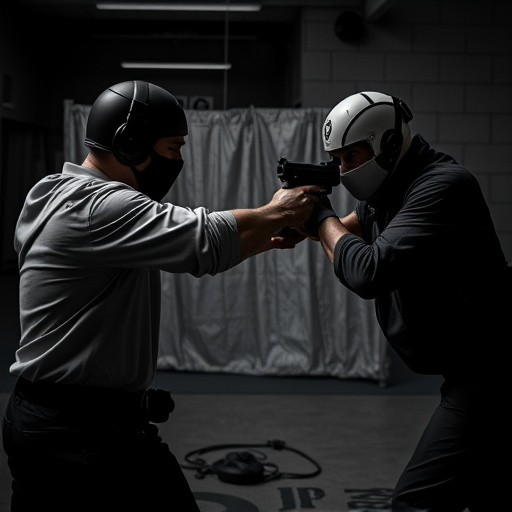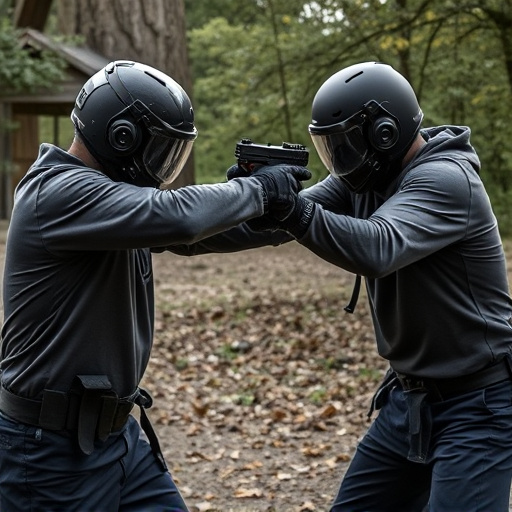In the U.S., state regulations on stun guns vary regarding ownership, permits, age restrictions, and battery maintenance. To ensure legal compliance and optimal device performance, users must understand these rules, follow best practices for battery care (like regular charging and avoiding extreme temperatures), and stay informed about local laws. Purchase from reputable retailers who can guide on compliance, register your stun gun, and consistently maintain batteries according to manufacturer recommendations. Responsible ownership includes secure storage, inspections, and adherence to charging/storing guidelines for reliable personal defense.
“Unraveling the legal landscape of stun guns across America, this comprehensive guide offers a state-by-state breakdown of regulations. From federal perspectives to local laws, understanding these nuances is crucial for responsible ownership. Discover tips on maximizing stun gun battery life—a vital aspect for self-defense. Learn about legal exemptions and navigate purchasing, registration, and safety measures with our step-by-step guide. Empower yourself with knowledge on how to maintain stun gun battery life and ensure you’re prepared for any situation.”
- Understanding Stun Gun Regulations: A Federal vs State Perspective
- Stun Gun Battery Life: Tips for Prolonged Performance
- Legal Limitations and Exemptions: Know Your Rights State-by-State
- Purchasing and Registering Stun Guns: A Step-by-Step Guide
- Safety Measures: Responsible Stun Gun Ownership and Usage
Understanding Stun Gun Regulations: A Federal vs State Perspective

In the United States, the regulations surrounding stun guns vary significantly from state to state, creating a complex legal landscape for owners and potential buyers. While federal laws provide some oversight, particularly regarding interstate commerce and air travel, the primary authority lies with individual states to establish their own rules and restrictions. This means that what is permissible in one state might be strictly prohibited in another, making it crucial for stun gun enthusiasts to understand these varying regulations before purchasing or carrying such devices.
When considering how to maintain stun gun battery life—an essential aspect of ensuring the device’s functionality—users must also account for state laws. Different states have different requirements for battery storage and disposal, often tied to broader regulations on the stun gun itself. For instance, some states mandate specific types of batteries or charging methods, while others may have restrictions on the overall capacity or voltage of the stun gun’s power source. Staying informed about these details is vital to not only keep your stun gun in optimal condition but also to remain compliant with local laws.
Stun Gun Battery Life: Tips for Prolonged Performance

Stun guns, while powerful personal defense tools, rely heavily on their batteries for effectiveness. Prolonged battery life ensures that you’re always prepared and ready to use your stun gun when needed. To maintain optimal battery performance, regular care is essential. Start by keeping the device clean; remove any dust or debris that might interfere with contact points. Use a soft cloth or brush specifically designed for electronics to avoid damage. Additionally, store your stun gun in a cool, dry place away from direct sunlight and extreme temperatures, as these can degrade batteries faster.
Regular charging is another key tip. Don’t let the battery drain completely before recharging; most manufacturers recommend topping up the battery every few months, even if it still shows some power left. Following these simple maintenance steps will help extend your stun gun’s battery life, ensuring you have a reliable defense mechanism when it matters most.
Legal Limitations and Exemptions: Know Your Rights State-by-State

Knowing your state’s laws regarding stun guns is essential, as regulations vary widely across the US. Each state has its own set of restrictions and exemptions when it comes to owning and carrying a stun gun, which can make navigating the legal landscape challenging. Some states allow stun guns without a permit, while others require specific licenses or registrations. Certain states also have age restrictions, mandating that users be at least 18 or 21 years old.
When it comes to carrying a stun gun in public, some states follow a “may issue” policy, where law enforcement officials have the discretion to decide who is allowed to carry a stun device based on individual circumstances. Other states have more stringent rules, requiring specific training or certifications for open carry. To maintain your rights and avoid legal issues, it’s crucial to research and understand these state-by-state variations. Additionally, keep in mind that while some states may permit stun guns, there might still be restrictions on where and how they can be used, and you should always prioritize safety when carrying any self-defense tool. Remember, proper battery maintenance is also key; follow manufacturer guidelines to prolong the life of your stun gun’s battery, ensuring it remains reliable when you need it most.
Purchasing and Registering Stun Guns: A Step-by-Step Guide

Purchasing and registering a stun gun involves several steps, but it’s crucial to understand state-specific laws before making your purchase. Each state has its own regulations regarding stun guns, including restrictions on who can buy them, where they can be carried, and whether they need to be registered. Start by identifying your state’s legal requirements; this information is typically available online through official government resources or local law enforcement agencies.
Once you’ve confirmed that stun guns are legal in your state, it’s time to shop. Purchase your device from a reputable retailer who can provide proof of age and identify the specific laws around battery life and charging. After purchasing, register your stun gun as required by your state. This often involves filling out a simple form with personal information and the details of your purchase. Remember to regularly maintain your stun gun’s battery life according to the manufacturer’s guidelines for optimal performance and safety.
Safety Measures: Responsible Stun Gun Ownership and Usage

Stun guns, while powerful tools for self-defense, come with a significant responsibility. Responsible ownership and usage are paramount to ensuring safety and legal compliance. Beyond understanding local laws and obtaining necessary permits, users must prioritize proper storage and maintenance. This includes keeping stun guns away from children and unauthorized individuals and regularly inspecting the device for any signs of damage or malfunction.
Battery life is a crucial aspect to consider in stun gun ownership. Regularly checking and replacing batteries as needed ensures the device will function when required. Proper charging practices, adhering to manufacturer guidelines, and storing spare batteries safely are essential measures to maintain optimal battery health. By implementing these safety measures, responsible stun gun owners can safeguard themselves while navigating legal restrictions by state.
When it comes to stun gun ownership, understanding state-specific legal restrictions is paramount. This guide has equipped you with knowledge about federal versus state regulations, battery care through tips on how to maintain stun gun battery life, and step-by-step instructions for purchasing and registering. Moreover, safety measures highlighted here ensure responsible ownership and usage. Always stay informed about local laws, as they can vary significantly, and remember to exercise caution when carrying a stun gun.
